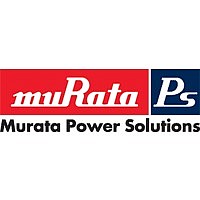PTGL07BD100N2B51B0 Murata Electronics North America, PTGL07BD100N2B51B0 Datasheet - Page 28

PTGL07BD100N2B51B0
Manufacturer Part Number
PTGL07BD100N2B51B0
Description
THERMISTOR
Manufacturer
Murata Electronics North America
Datasheet
1.PRF18AR471QS2RB.pdf
(59 pages)
Specifications of PTGL07BD100N2B51B0
Lead Free Status / RoHS Status
Lead free / RoHS Compliant
!Note
• This PDF catalog is downloaded from the website of Murata Manufacturing co., ltd. Therefore, it’s specifications are subject to change or our products in it may be discontinued without advance notice. Please check with our
• This PDF catalog has only typical specifications because there is no space for detailed specifications. Therefore, please approve our product specifications or transact the approval sheet for product specifications before ordering.
sales representatives or product engineers before ordering.
!Note
No.
10
11
1
2
3
4
5
6
7
8
9
Chip Type of POSISTORr for Overheat Protection Specifications and Test Methods
Resistance Value
(at 25˚C)
Adhesive Strength
Vibration
Resistance
Resistance to
Bending of
Substance
Solderability
Soldering Heat
Resistance
Dry Heat
Resistance
Cold Resistance
Damp Heat
Resistance
Thermal Shock
High Temperature
Humidity Load
• Please read rating and !CAUTION (for storage, operating, rating, soldering, mounting and handling) in this catalog to prevent smoking and/or burning, etc.
• This catalog has only typical specifications because there is no space for detailed specifications. Therefore, please approve our product specifications or transact the approval sheet for product specifications before ordering.
Item
3
The resistance value should be within the specified tolerance.
There is no detachment sign of electrode.
Normal appearance
Resistance change: not to exceed ±20%
Normal appearance
Resistance change: not to exceed ±20%
Min. 95% electrode is covered with new solder.
Resistance change: not to exceed ±20%
Resistance change: not exceed ±20%
Normal appearance on the section showed
by slanting line parts of the electrodes on the figure.
Normal appearance
Resistance change: not to exceed ±20%
Electrode
Rating Value
2
PTC
2
2
2
2
After applying maximum operating voltage for 3 minutes and
leaving for 2 hours at 25°C, measured by applying voltage of
less than 1.5Vdc (by a direct current of less than 10mA).
EIAJ ET-7403 term 9
Prepare soldered PTC to PCB 1 and add the force of 5.0N in
the direction shown below. (PTC=POSISTORr)
Soldered PTC to PCB
Vibrate for 4 hours in each of 3 mutually perpendicular planes for
a total of 12 hours. This test condition is according to "MIL-STD-
204D"
Soldered PTC on Test Board
Test Board shown below:
JIS C 5102 term 8.4
Solder temp.: 260±5°C
Solder: Sn63%/Pb37% (or 60%/40%)
Flux: Containing less than 0.2wt% of chlorine.
Soaking time: 10±0.5 seconds
Soaking position: Until a whole electrode is soaked.
Preheating: 150±5°C 3 minutes
Soldered PTC to PCB
Soldered PTC to PCB
Soldered PTC to PCB
Soldered PTC to PCB
Soldered PTC to PCB
Vibration: 10-2000-10Hz (20 minutes)
Max. Amplitude: 3.0mm
Bending Speed: 1.0mm/s
Bending Strength: 2.0mm
Hold time: 5±1 seconds
Board Dimension: 100 A 40 A 1.6t mm
Board Material: Glass Epoxy
Solder temp.: 230±5°C
Solder: Sn63%/Pb37% (or 60%/40%)
Soaking time: 3±0.5 seconds
Soaking position: Until a whole electrode is soaked
+150±3°C leave for 1000±12 hours
-40±3°C leave for 1000±12 hours
+85±3°C 80-85%RH leave for 1000±12 hours
Cycles: 1000 cycles
85±3°C, 80-85%RH (in air), load max. operating voltage for
1000±12 hours
Step
1
2
Temp. (°C)
+125+3, -0
-55+0, -3
R230
45 2
PTC
Method of Examination
PTC
1
1
1
1
1
1
F
20
50
1
Time (minutes)
, and apply force on back side of
Continued on the following page.
45 2
30
30
Force
Glass Epoxy PCB
F
Bending
(in mm)
R03E.pdf
27
07.3.21
4





















